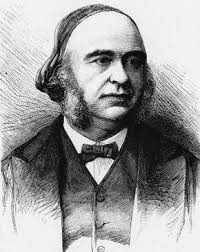”Broca’s accomplishments in his near fifty-six years of life are almost immeasurable”
— Erwin H. Ackerknecht
Pierre Paul Broca was born in 28th June 1824 in Sainte-Foy-la-Grande, France. Broca was born to Annette Broca and Doctor Jean Pierre Benjamin Broca. Paul was their 3rd child. Paul’s father was a local doctor and was reported to treat the poor and pay for their medicine. Whilst charging the rich a song. ‘’Coir re’’ – (it’s nothing) was reportedly his favourite phrase (Schiller, 1980). Pauls mother Annette was a daughter of a Calvinist pastor. Broca was described as ‘’a scholar at the age of eleven’’ (Schiller, 1980, p. 13). Broca studied a bachelor’s degree of letters (history and literature) in 1840 and he travelled from his hometown to Toulouse to complete a mathematic degree.
Paul had planned on leaving home and studying engineering, however when his sister Leotine passed away he did not want to travel too far away from his parents and decided instead to study medicine. Broca travelled to Paris and to pay his way whilst studying he became a teacher in the college of Sainte-Barbe which was a prestigious college. After many years as a teacher Broca went on to train to become a surgeon in Paris. Broca emerged from his study and went on to become one of France’s ‘Most outstanding, medical scientist and practitioner’ (Clarke ,1980, p. 1452) Broca’s doctoral thesis in 1849 was the first to demonstrate the spread of cancer through the veins. By the age of 35 Broca had contributed to over 100 papers to his field. In his lifetime Broca contributed over 500 publications in the fields of cerebral localization and anthropology (Schiller, 1980).
Of all Broca’s achievements he is most well-known for his work around the language and speech areas of the brain. His name is used to identify a specific region of the brain, Broca’s area. His name is given to the partial loss of ability to produce language ‘Broca’s aphasia’.
In Paris 1861 Monsieur Leborgne (Tan) died in the care of then neurologist Broca. Tan had been the only word that Leborgne could pronounce and so he demonstrated damage in the language area of the brain. During this time there was an ongoing debate around the location of the language function of the brain and whether language was affected by lesions of the anterior lobes. When Broca performed an autopsy on Tan he found a malformation on the left frontal lobe (Jarret, 2013). This was consequently named Broca’s area and believed to be the site for speech production. Whilst Broca was not the first to suggest that the frontal lobes may be closely related to speech production, the evidence from Tan strengthened the theory. Broca’s work strengthened the field of biopsychology and provided evidence towards the brain have specific areas for language and speech production.
Broca wrote an article championing improvement to the education that women received. Broca believed that the home was shaped by the woman and as such they too should be educated to a better standard. (Schiller, 1980 cited in Marsden, 1981).
In recognition of his work in 1880 Broca was elected for a lifetime to the French Senate. There is also a hospital in Paris named in his honour.
Word Count – 540
References
Clarke, E. (1980). Life of an Anatomist. Science, 208(4451), 1452-1453
Jarret, C. (2013, January, 24). Glimpsed at last – the life of neuropsychology’s most important patient. Retrieved from: https://digest.bps.org.uk/2013/01/24/glimpsed-at-last-the-life-of-neuropsychologys-most-important-patient/
Marsden C. (1981). Paul Broca. Journal of Neurology, Neurosurgery & Psychiatry, 44(11), 1058.
Schiller, F. (1980). Paul Broca Explorer of the brain. Berkeley,C.A: Oxford University Press.
